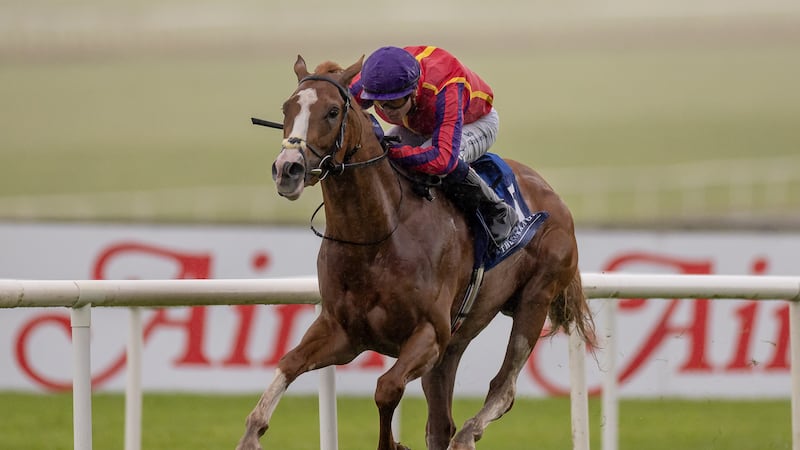Irish racing’s regulator has got the long-awaited “authorised officer” status required for officials to carry out drug-testing on thoroughbreds in premises it doesn’t license.
A total of 11 Irish Horseracing Regulatory Board personnel have been issued with warrant cards authorised by the Minister for Agriculture, Food & The Marine, Charlie McConalogue.
Up to now IHRB officials have had authority to enter premises it licenses such as training yards but were unable to go into unlicensed premises like studs and pre-training establishments.
However racing’s long-awaited and up to date anti-doping regime came into effect on Tuesday when inspections were carried out by racing’s own regulatory personnel armed with new powers.
They include being able to trace any thoroughbred wherever it is and with “the authority to search a premises and seize material if necessary, including animal remedies”.
Up to now such functions could only be carried out by Department of Agriculture, Food & Marine (DAFM) inspectors.
An IHRB spokesman confirmed on Tuesday that warrant cards have been issued and said: “We have 11 authorised officers. They are all existing Irish Horseracing Regulatory Board personnel.”
He also confirmed the new powers have been granted as one of the commitments agreed by the Irish racing industry under its 2018 anti-doping policy, part of a move towards “increased transparency and accountability” in relation to regulation of drugs, animal welfare and integrity.
The 2018 anti-doping policy was unanimously approved by the board of Horse Racing Ireland and a memorandum of understanding between the IHRB and DAFM that conferred authorised officer status was a key recommendation of an anti-doping task force report in 2016.
That was set up on the back of a series of controversies involving anabolic steroids that rocked the sector.
Anabolic steroids
A raid on the yard of high-profile trainer Philip Fenton in January of 2012 resulted in him being found guilty in the district court of eight charges of possessing banned animal medicines, including anabolic steroids.
He subsequently had his licence suspended for three years by racing’s authorities and resumed his training career in 2018.
Another trainer, Pat Hughes, was also convicted in the district court of possessing unauthorised animal medicines, including an anabolic steroid.
Hughes’s brother, John, a retired Department of Agriculture veterinary inspector, pleaded guilty to possession of the anabolic steroid Nitrotain.
What was described in court as a “commercial quantity” of the powerful muscle-building drug was intercepted at Dublin Airport in 2012 on its way to Hughes who was disqualified from racing for five years.
The anti-doping Task Force, which comprised all sectors of racing and bloodstock, was subsequently set up as an “absolute priority”.
However its key recommendation that racing’s regulator be able to carry out lifetime tracing of thoroughbreds got mired in delays and controversy.
The Irish Thoroughbred Breeders Association, which represents the bulk of the breeding sector, originally argued its members should have seven days notice of any inspection.
That was argued down to 24-hour notice until in February, and on the back of the high-profile "nobbling" case of the Charles Byrnes-trained Viking Hoard, HRI announced that lifetime tracing and out of competition testing with no notice was part of a radical shake-up of anti-doping in Ireland.
A communication to various industry sectors outlines how IHRB authorised officers have additional powers under the 1993 animal remedies act “extending to thoroughbred horses, premises on which they are kept and associated records and documentation”.
It also says such officers can enter unlicensed premises and “find, identify and test” a thoroughbred. Any suspected contravention will be reported to DAFM.
Hair samples
The IHRB has said it hopes to carry out up to 5,000 drug tests this year. Up to 600 samples are planned to be taken at public auction sales. About 25 per cent of tests will be taken before horses come under the care of a licensed trainer.
Tests will involve blood, urine and hair samples. Last year the IHRB was the first regulatory body in world racing to start taking hair samples at race-meetings.
A total of 3,224 samples were taken from horses in 2020 according to IHRB statistics when 10 prohibited substances were found.
Earlier this year the IHRB's head of anti-doping, Dr Lynn Hillyer, said the new authorised officer status is unique to Irish racing.
“There is no other racing authority who works with the Government authority in the way we would be working with the Department of Agriculture,” she commented.
The new anti-doping regime also includes 30-day foal notification and this year’s foal crop is the first to be issued with e-passports.
The first of a twice-yearly testing report from the IHRB is expected to be issued at the end of next month.

















